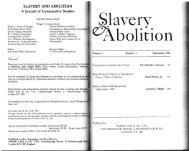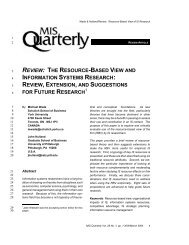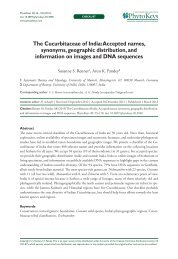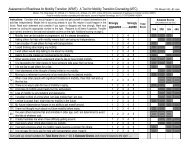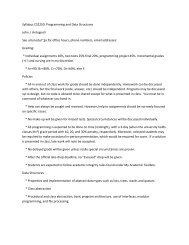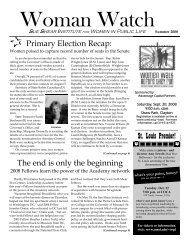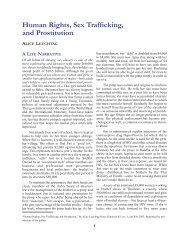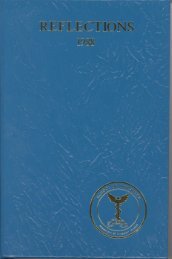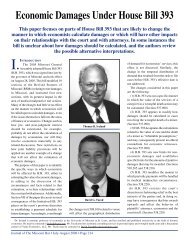The Price of Illicit Drugs: 1981 through the - The White House
The Price of Illicit Drugs: 1981 through the - The White House
The Price of Illicit Drugs: 1981 through the - The White House
You also want an ePaper? Increase the reach of your titles
YUMPU automatically turns print PDFs into web optimized ePapers that Google loves.
model because each purity observation corresponds to a binomial observation. For example, if a<br />
purchase had an observed purity <strong>of</strong> 0.8 <strong>the</strong>n, if m was 1,000, we have effectively observed 800<br />
events in 1,000 trials.<br />
<strong>The</strong> problem is that <strong>the</strong> value <strong>of</strong> m is unknown. While a purity measurement <strong>of</strong> 0.8 is consistent<br />
with obtaining 800 events in 1,000 trials, it is also consistent with obtaining 8 events in 10 trials,<br />
but <strong>the</strong>se two binomial observations convey different information. However, if we assume <strong>the</strong><br />
value <strong>of</strong> m is <strong>the</strong> same for all purchases (i.e. that <strong>the</strong> size <strong>of</strong> <strong>the</strong> small sample used in <strong>the</strong> laboratory<br />
analysis was <strong>the</strong> same size for all purchases), any choice <strong>of</strong> m will suffice provided <strong>the</strong> variance<br />
function incorporates a dispersion parameter. That is, estimation and inference based on an<br />
overdispersed binomial model is invariant to <strong>the</strong> choice <strong>of</strong> m. Thus, our mean and variance<br />
functions for purity were:<br />
E(purity itj ) = exp( + city i + time t )/{1 + exp( + city i + time t )} (5)<br />
V(purity itj ) = {E(purity itj )(1 - E(purity itj ))}/m (6)<br />
Here, purity itj represents <strong>the</strong> jth observation from <strong>the</strong> ith city at <strong>the</strong> tth time period, and is <strong>the</strong><br />
dispersion parameter. Equation (5) specifies a logistic model, because <strong>the</strong> inverse <strong>of</strong> <strong>the</strong> mean<br />
function is <strong>the</strong> logit function. In contrast to <strong>the</strong> linear model (3), <strong>the</strong> logistic model restricts <strong>the</strong><br />
mean purity to <strong>the</strong> unit interval.<br />
This purity model contained 107 parameters (29 for <strong>the</strong> 30 cities, 77 for <strong>the</strong> 78 quarters, and one<br />
for <strong>the</strong> intercept). Based on estimate <strong>of</strong> <strong>the</strong>se parameters, we derived estimates for mean purities<br />
for each city in each quarter. For a given quarter, <strong>the</strong> 30 city means were multiplied by <strong>the</strong>ir<br />
respective DAWN weights and <strong>the</strong> sum <strong>of</strong> <strong>the</strong>se contributions provided a weighted estimate for<br />
<strong>the</strong> mean price and mean purity in <strong>the</strong> U.S. for that quarter. <strong>The</strong> national results are show in Tables<br />
1-4, and Figures 3, 6, and 8.<br />
6. A Model for Weights<br />
As previously noted, <strong>the</strong> price and purity models described above provided estimates for mean<br />
price and mean purity for each city in each quarter. For a given quarter, <strong>the</strong> 30 city means were<br />
A-14





